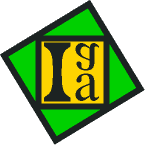
Summer Workshop on Geometry and Topology


|
Summer Workshop on Geometry and Topology |
 |
This will be a workshop to bring together overseas visitors, local researchers, and postgraduate students working in a number of areas of geometry and topology.
11:30-12:20 C. Farsi (University of Colorado, Boulder)
14:00-14:50 E. Lerman (University of Illinois, Urbana-Champaign)
15:00-15:50 F. Kirwan (Oxford University/University of Melbourne)
11:30-12:20 D. Crowley (Indiana University)
14:00-14:50 N. Buchdahl (University of Adelaide)
15:00-15:50 M. Eastwood (University of Adelaide)
19:00 Workshop dinner at the Jasmin Indian Restaurant.
Please let Siye Wu know as soon as possible if you wish to attend.
11:30-12:20 B. Wang (University of Adelaide)
14:00-14:50 W. Li (Oklahoma State University)
15:00-15:50 P. Bouwknegt (University of Adelaide)
Peter Bouwknegt
Stringy Geometry
Abstract:
String theory has had a major impact on recent developments in geometry. In
this talk I will review some of these developments.
Nick Buchdahl
K3 surfaces
Abstract:
In the late 1950's, Weil and Andreotti made a number of conjectures
concerning the so-called K3 surfaces, these being by definition the compact
simply connected complex surfaces with trivial canonical bundle.
Over the years, these conjectures inspired a vast body of research and
eventually all were proven to be true in one form or another (the last
being proved in 1983). K3 surfaces continue to occupy a pivotal role in
algebraic and differential geometry and topology, and a casual glance at
contemporary journals reveals that they remain objects of great interest.
The purpose of this talk is to describe a greatly simplified approach
proving the conjectures.
Diarmuid Crowley
Finishing the Classification of 2(6)-connected 7(15)-manifolds
Abstract:
By 1965 C.T.C. Wall had used Smale's proof of the Generalised Poincare
Conjecture and Haefliger's results on immersions to classify highly
connected manifolds except in dimensions 3, 7 and 15. In 1972, Wilkens,
a student of Wall's, produced a partial classification in dimensions 7
and 15. Recent work by Grove and Ziller constructing metrics of
non-negative sectional curvature on 3-sphere bundles over the 4-sphere
motivated the completion of the classification. I shall present a full
classification in dimensions 7 and 15, showing that Wall's original
statement continues to hold in these dimensions. Of particular interest
are unexpected examples of manifolds which are tangentially homotopy
equivalent but not homeomorphic.
Michael Eastwood
Elementary Invariants for Isolated Singularities and Calabi-Yau
Hypersurfaces
Abstract:
The equation x^3 + y^3 + z^3 + txyz = 0 for a choice of parameter t defines
an isolated singularity at the origin in C^3. Is t determined by this complex
singularity? This talk is constructed from conversations with Stephen Yau
supplemented by some computations of my own.
Carla Farsi
Orbifold Eta Invariants
Abstract:
The Laplacian is an example of an interesting self-adjoint elliptic operator
that can be defined on manifolds. Its eigenvalues encode geometrical
information. The eta invariant associated to a self-adjoint elliptic operator
on a manifold is some kind of signature associated to it, and therefore it
stores some geometrical information. In order to formally define eta
invariants, one needs to use the Atiyah-Patodi-Singer index theorem for
manifolds with boundary. In this talk I will illustrate these ideas.
Moreover we will discuss how to extend the definition of eta invariants to
some generalized manifolds called orbifolds. More precisely, orbifolds are
spaces with a dense set of manifold-like points, and a singular set locally
modelled on the quotient of an euclidean space by a finite subgroup of an
orthogonal group. We will also discuss how one can extend the
Atiyah-Patodi-Singer index theorem to orbifolds with boundary.
Frances Kirwan
Intersection Homology and Witten's Integrals for
Singular Symplectic Quotients
Abstract:
In 1992 Witten introduced his "principle of nonabelian localisation" to
provide formulas for intersection pairings between cohomology classes on
quotients (Marsden-Weinstein reductions) of symplectic manifolds by compact
group actions, and in particular on some Yang-Mills moduli spaces.
He did this by studying the asymptotic behaviour of certain integrals
Z(\epsilon), which in the Yang-Mills case are partition functions for
two-dimensional Yang-Mills theory on a compact Riemann surface. When the
symplectic quotient is nonsingular, Z(\epsilon) can be expressed as the sum
of a polynomial in \epsilon whose coefficients are the intersection pairings
required, together with terms which tend to zero exponentially fast with
\epsilon. Witten also calculated the asymptotic behaviour of Z(\epsilon)
in one example when the quotient is singular, and found that a polynomial in
the square root of \epsilon appeared instead of a polynomial in \epsilon.
He conjectured that it should be possible to interpret the exponents of the
non-integral powers of \epsilon in terms of the singularities of the
associated quotient space, and asked for an interpretation of the coefficients
(perhaps only of lower powers of \epsilon) as intersection pairings. This
talk will attempt to describe the background to this question and some recent
progress towards an answer.
Eugene Lerman
Contact Toric Manifolds and Geodesic Flows
Abstract:
By studying completely integrable torus actions on contact manifolds (i.e.,
contact toric manifolds) we prove a conjecture of Toth and Zelditch that
integrable geodesic flows on tori with global homogeneous action variables
must have flat metrics.
Weiping Li
Semi-infinity of the Floer Cohomology
Abstract:
The instanton and symplectic Floer cohomologies have many semi-infinite
properties from mathematical physics point of view. In the talk, I will
show some rigorous mathematical proof for verifying the semi-infinity.
Byran Wang
Exact Triangles in Monopole Homology and Casson-Walker Invariant
Abstract:
I will discuss the central structure in the monopole homology theory for any
closed oriented 3-manifold: the exact triangles. As a byproduct, I will show
that the topologically invariance version of the Seiberg-Witten invariant for
a rational homology 3-sphere agrees with the Casson-Walker invariant (which
is a wide-spread conjecture for some time!).